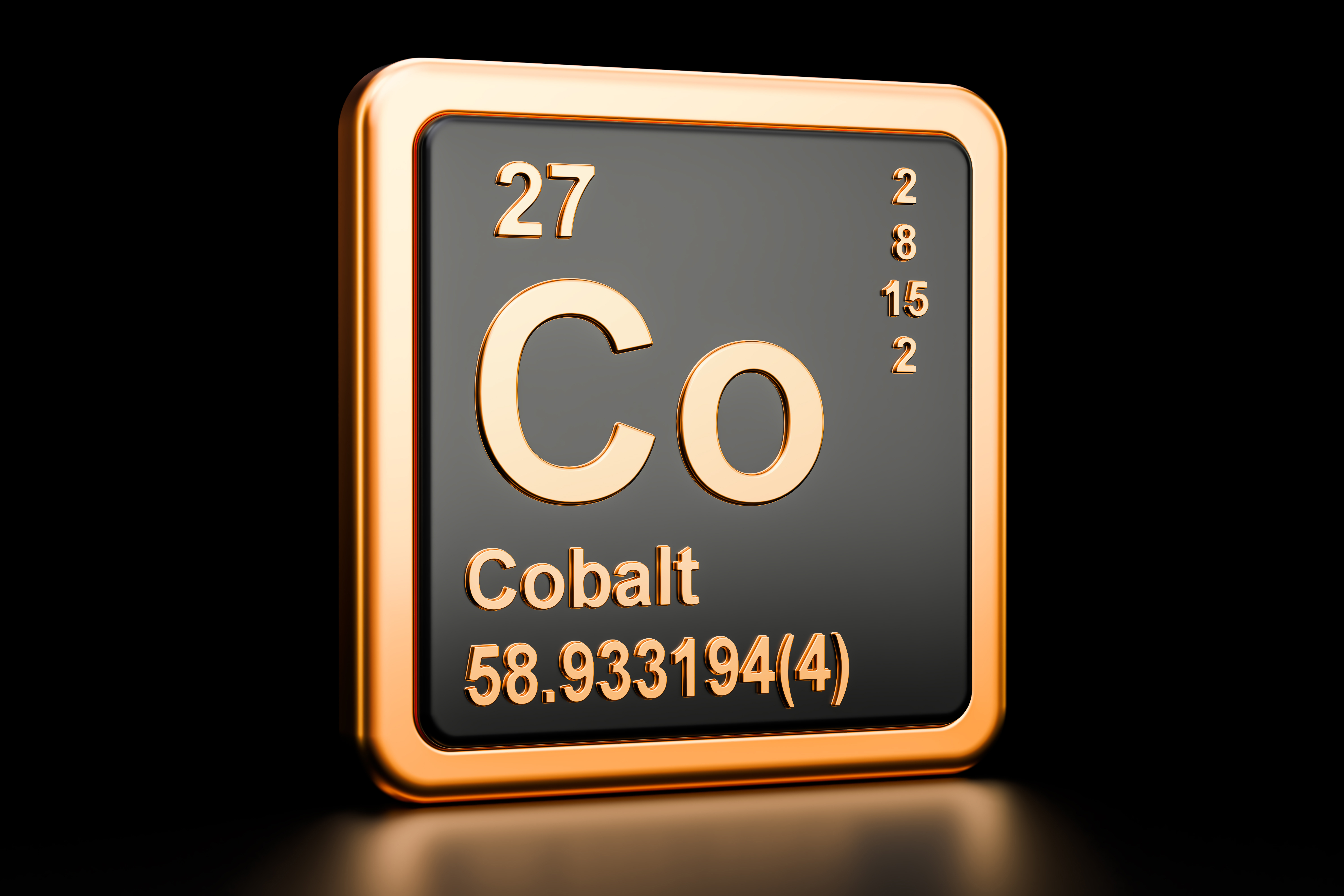 If you thought our dependence on foreign foundries for microelectronics was a significant supply chain problem for the United States, then you don’t want to know about the situation with batteries.
If you thought our dependence on foreign foundries for microelectronics was a significant supply chain problem for the United States, then you don’t want to know about the situation with batteries.
It is not an exaggeration to say that modern society is beholden to the Li-ion battery. The large EVs that consumers want, the small electronics that protect warfighters, and the green revolution that we need are all powered by batteries. To date, Li-ion technology is the only battery type likely to meet our increasing battery power demands. Our reliance on a single type of battery has created a vulnerability—America’s access to both the raw materials and the final product is flimsy, at best.
Consumer electronics are staples of modern American life. Li-ion technology, first developed in 1985,1 is the most popular form of battery technology in small electronics for multiple technical reasons.2 But, the impact of Li-ion batteries is not limited to small electronics. Military and in aerospace applications are driving the need for large battery technology.3 Further, the coming electric vehicle (EV) revolution will use Li-ion batteries.4 Even beyond EVs, renewable energy sources will not replace fossil fuels without battery technology. Wind, solar, tidal wave, and other intermittent energy production sources that cannot be “turned on and off” will require large-scale storage systems to support the electrical grid and intelligent storage systems will be needed to balance supply and demand.
A state-of-the-practice Li-ion battery has a lithium-cobalt alloy cathode, a graphite anode, and an organic solvent electrolyte. The biggest liabilities are our access to lithium and cobalt cathode materials, which are primarily extracted overseas; refining of the materials and manufacturing of batteries is dominated by China.
Lithium is obtained by either evaporating water from brine reservoirs (salars) located in high-elevation South American countries, such as Chile and Argentina, or from mining in Australia. Australian mining is the biggest supplier, but the largest reservoirs are in South America.5 The need for batteries will outpace current mining capabilities but not worldwide capacity.6,7 Complaints about environmental impacts of mining are increasing.8

Cobalt requires byproduct recovery from non-cobalt metal mining. Sixty percent of these processes are performed in the Democratic Republic of the Congo (DRC) by Chinese operators.9 After mining in the DRC, China refines the vast majority of raw cobalt domestically.10 Cobalt mining is associated with human rights violations11 and has deleterious impact on ground water and arable land.12 Relying on cobalt mining to this extent is neither economically safe for countries other than China nor physically safe for those involved in the process.
Accordingly, China has cornered the market for Li-ion battery production. Of the top ten Li-ion battery manufacturers, four are Chinese and the remainder are found in Asian nations. The top Li-ion battery manufacturer in 2020 was LG-Chem (Korea) with 26.5% of the market share followed by Contemporary Amperex Technology Company—CATL (China) with 25.8%.13 In 2021, CATL surpassed LG, and now has a 32.5% market share of all worldwide Li-ion battery production.14 The United States has lost the race for Li-ion battery dominance. Beyond our lack of control over Li-ion battery raw materials, we also are dependent on China for manufacturing. We can and will continue to purchase this technology from China for consumer products, military use, electric vehicles, and other applications, but this is a vulnerability.
America will need batteries indefinitely and barring a major shift in manufacturing capabilities or alternate technology developments, America will remain dependent on China for Li-ion batteries. The United States will need to invest in the invention and manufacturing of novel battery systems to lead the next energy storage revolution.
What therefore are the prospects for reducing our reliance on Lithium-Ion battery technology?
In 1985, less than 40 years ago, we did not have Li-ion batteries and now they dominate the market. While foreign-made and -sourced Li-ion batteries will provide advanced capabilities for many years to come, alternatives should be developed to a commercially acceptable level.
Promising technologies under investigation include:
- Sodium-based batteries,15 as sodium is abundant, easily extracted, and can be employed to produce a solid-state battery.16,17
- Nickel-hydride cells are viable, although nickel is not currently mined extensively in the US.18,19
- Lithium iron phosphate batteries have received recent interest because they do not contain cobalt or nickel and are less expensive than Li-ion cells. These batteries have a lower specific energy density (capacity per unit weight) and they still require lithium.20
- Iron-air batteries.21
- Hydrogen fuel cells—which, while not batteries, are being studied for vehicular applications.22

These research areas hold promise but will require optimization to become economically viable. Research will not be enough. Investments in manufacturing and packaging facilities must occur in tandem, or America will lose the battle for battery technology dominance.
Battery research continues in a quest to increase specific energy and decrease reliance on exotic materials. The Administration is funding a $3 billion initiative to strengthen the battery supply chain with a focus on vehicles and large-scale storage.23 This initiative will focus on expanding domestic recycling and manufacturing facilities as well as advancing research and development. Separately, the Department of Energy has published a blueprint for Lithium batteries with a goal of achieving a secure supply chain by 2030,24 and the Department of Defense has published an action plan concerning defense-critical supply chains that includes a section on energy storage and batteries.25
Replacing the Li-ion battery will require a mix of technologies, depending on the application. But the time to engineer the next generation technologies and ready the production capacity is now—before we are locked into risky supply chains, yet again.
Now you have another supply chain issue to worry about.
Endnotes
1. The Nobel Prize in chemistry was awarded to John B. Goodenough, M. Stanley Whittingham, and Akira Yoshino in 2019.
2. Li-ion batteries have one of the best energy-to-weight ratios, a high open circuit voltage, low self-discharge rate, no memory effect, and a slow loss of charge when not in use compared to other battery technology.
3. Vikram Mittal, “U.S. Soldiers’ Burden Of Power: More Electronics Means Lugging More Batteries,” Forbes October 26, 2020, https://www.forbes.com/sites/vikrammittal/2020/10/26/energy-management-a-deciding-factor-of-future-battles/?sh=6fefddf62b1a.
4. “Alternative Fuels Data Center: Batteries for Hybrid and Plug-In Electric Vehicles,” U.S. Department of Energy, 2015. https://afdc.energy.gov/vehicles/electric_batteries.html.
5. “Lithium Mining: What You Should Know about the Contentious Issue,” Volkswagen Group, 2020, https://www.volkswagenag.com/en/news/stories/2020/03/lithium-mining-what-you-should-know-about-the-contentious-issue.html.
6. “End in Sight to Near-Term Lithium Supply Shortages,” October 16, 2017, https://about.bnef.com/blog/end-sight-near-term-lithium-supply-shortages/.
7. Maria Gallucci, “EVs Will Drive A Lithium Supply Crunch,” May 5, 2021, https://spectrum.ieee.org/evs-to-drive-a-lithium-supply-crunch.
8. “Lithium,” Friends of the Earth Europe, https://www.foeeurope.org/sites/default/files/publications/13_factsheet-lithium-gb.pdf.
9. Todd C. Frankel, “Cobalt Mining for Lithium Ion Batteries Has a High Human Cost,” The Washington Post September 30, 2016, https://www.washingtonpost.com/graphics/business/batteries/congo-cobalt-mining-for-lithium-ion-battery/.
10. “Cobalt Refinery Capacity by Major Countries,” Statista January 24, 2022, https://www.statista.com/statistics/339798/annual-cobalt-refinery-capacity-by-country/.
11. Todd C. Frankel, “Cobalt Mining for Lithium Ion Batteries Has a High Human Cost,” The Washington Post September 30, 2016. https://www.washingtonpost.com/graphics/business/batteries/congo-cobalt-mining-for-lithium-ion-battery/.
12. Gabriel Bamana, Joshua D. Miller, Sera L. Young, and Jennifer B. Dunn, “Addressing the Social Life Cycle Inventory Analysis Data Gap: Insights from a Case Study of Cobalt Mining in the Democratic Republic of the Congo.” One Earth December 17, 2021, https://doi.org/10.1016/j.oneear.2021.11.007.
13. “Lithium Ion Batteries—Main Manufacturers 2020,” Statista June 23, 2021, https://www.statista.com/statistics/235323/lithium-batteries-top-manufacturers/.
14. Bruno Venditti, “Ranked: The Top 10 EV Battery Manufacturers,” September 25, 2021, https://elements.visualcapitalist.com/ranked-top-10-ev-battery-makers/.
15. Yixian Wang, Hui Dong, Naman Katyal, et al., 2022, “A Sodium–Antimony–Telluride Intermetallic Allows Sodium-Metal Cycling at 100% Depth of Discharge and as an Anode-Free Metal Battery.” Advanced Materials 34 (1). https://doi.org/10.1002/adma.202106005.
16. Robert Service, “Sodium Batteries Are One Step Closer to Saving You from a Mobile Phone Fire.” Science April 19, 2019, https://doi.org/10.1126/science.aax7615.
17. Lithium based solid state batteries are the immediate future, but this technology is still too dependent on foreign supply chains to be a fully viable alternative.
18. Prachi Patel, “Sodium-Ion Batteries Poised to Pick Off Large-Scale Lithium-Ion Applications.” IEEE Spectrum March 10, 2021, https://spectrum.ieee.org/sodium-ion-battery.
19. M. Garside, “Global Nickel Mining Industry,” Statista September 2, 2021, https://www.statista.com/topics/1572/nickel/#dossierKeyfigures.
20. Yang Jie, “Elon Musk Likes This EV Battery and It Costs Less—but the U.S. Isn’t Sold on It,” The Wall Street Journal March 28, 2021, https://www.wsj.com/articles/elon-musk-likes-this-ev-battery-and-it-costs-lessbut-the-u-s-isnt-sold-on-it-11616929201.
21. Leigh Collins, “World’s Cheapest Energy Storage Will Be an Iron-Air Battery, Says Jeff Bezos-Backed Start-up,” July 23, 2021, https://www.rechargenews.com/energy-transition/worlds-cheapest-energy-storage-will-be-an-iron-air-battery-says-jeff-bezos-backed-start-up/2-1-1044174.
22. “Use of Hydrogen—U.S. Energy Information Administration (EIA),” US Energy Information Administration, https://www.eia.gov/energyexplained/hydrogen/use-of-hydrogen.php.
23. “Biden Administration, DOE to Invest $3 Billion to Strengthen U.S. Supply Chain for Advanced Batteries for Vehicles and Energy Storage,” February 11, 2022, https://www.energy.gov/articles/biden-administration-doe-invest-3-billion-strengthen-us-supply-chain-advanced-batteries.
24. “Federal Consortium for Advanced Batteries (FCAB).” n.d. Accessed March 10, 2022. https://www.energy.gov/eere/vehicles/federal-consortium-advanced-batteries-fcab.
25. Osdpa. 2022. “Securing Defense-Critical Supply Chains.”
